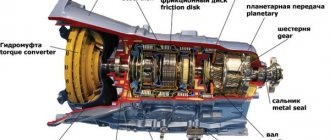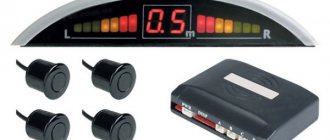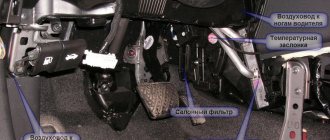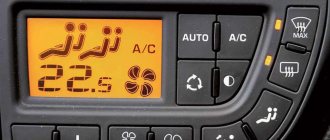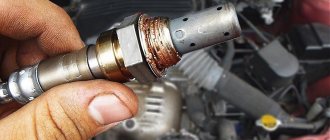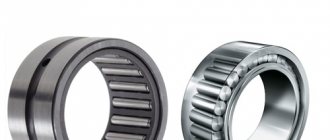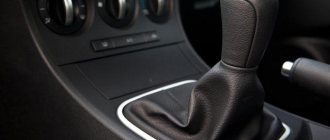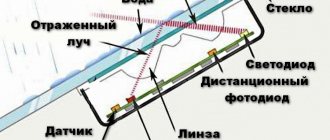Today, any vehicle is an extremely complex complex of various mechanisms and assemblies. Only as a result of their joint and very well-coordinated work do we have very comfortable, reliable and modern cars. Technologies in the automotive industry do not stand still and are constantly evolving, trying to satisfy almost all the needs of motorists as much as possible.
One of the most important elements in the operation of a vehicle is the hypoid transmission.
In this material we will look at the answers to the questions that most motorists have when faced with this definition.
- Hypoid transmission - what is the basic principle of operation of this process.
- What are the distinctive features of the operation of this mechanism?
- The main pros and cons of this process.
- Hypoid transmission care.
Purpose, design features
The main task of this element is to change the torque before applying it to the wheel drive. The gearbox does the same, but it has the ability to change gear ratios by engaging certain gears. Despite the presence of a gearbox in the design of the car, the torque output from it is small, and the rotation speed of the output shaft is high. If you transfer rotation directly to the drive wheels, the resulting load will “crush” the engine. In general, the car simply will not budge.
The final drive of the car provides increased torque and reduced rotation speed. But unlike a gearbox, its gear ratio is fixed.
Primary requirements. Modern tendencies
The main gears are subject to many requirements, the main ones being:
- Reliability;
- Minimal maintenance required;
- High efficiency indicators;
- Smooth and silent;
- Minimum possible overall dimensions.
Naturally, there is no ideal option, so designers have to look for compromises when choosing the type of final drive.
It is not yet possible to abandon the use of final drives in transmission designs, so all developments are aimed at increasing performance indicators.
It is noteworthy that changing the operating parameters of the gearbox is one of the main types of transmission tuning. By installing gears with a changed gear ratio, you can significantly influence the dynamics of the car, maximum speed, fuel consumption, load on the gearbox and power unit.
Finally, it is worth mentioning the design features of dual-clutch robotic gearboxes, which also affects the final drive design. In such gearboxes, paired and unpaired gears are separated, so there are two secondary shafts at the output. And each of them transmits rotation to its own drive gear of the main gear. That is, in such gearboxes there are two driving gears, and only one driven gear.
DSG gearbox diagram
This design feature allows you to make the gear ratio on the gearbox variable. To do this, only drive gears with different numbers of teeth are used. For example, when using a number of unpaired gears, to increase traction, a gear is used that provides a larger gear ratio, and the gear of a paired row has a lower value of this parameter.
The main gear of a car is a transmission element, in the most common version, consisting of two gears (driven and driven), designed to convert the torque coming from the gearbox and transmit it to the drive axle. The design of the main gear directly affects the traction and speed characteristics of the vehicle and fuel consumption. Let's consider the device, principle of operation, types and requirements for the transmission mechanism.
What parameters must hypoid oil satisfy?
It is impossible to say unequivocally what criteria a hypoid gear oil must meet. A good lubricant is one that is suitable for the operating conditions of a particular unit or unit. The criteria for selecting oil are determined individually by the car manufacturer, since all brands and even car models differ from each other.
Each car has its own design features, so they require a certain class of lubricant. The design and operating conditions of the hypoid transmission of one vehicle may differ markedly from a unit similar in purpose to another vehicle. Multiple factors are important here, including:
- torque;
- axis offset;
- rotational speed;
- impact force and much more.
Thus, if GL-4 fluid is optimal and recommended for a certain unit, then it may not be suitable at all for another transmission. Thus, when selecting hypoid oil, study the vehicle's owner's manual.
Methodology for selecting a gearbox depending on the load
The method for selecting a gearbox involves proper calculation of the main load parameters and operating conditions.
Technical characteristics are described in catalogs, and the choice of gearbox is made in several stages:
- selection of gearbox by type of mechanical transmission
- determination of the dimensions (standard size) of the gearbox
- determination of cantilever and axial loads on input and output shafts
- determining the temperature regime of the gearbox
At the first stage, the designer determines the type of gearbox based on the specified tasks and design features of the future product. At the same stage, parameters such as gear ratio, number of steps, location of the input and output shafts in space are laid down.
At the second stage, the interaxle distance should be determined. Initial data for each type of gearbox can be found in the catalog. It should be remembered that the center distance affects the ability to transmit torque from the engine to the load.
Cantilever and axial loads are determined by equations and then compared with the values in the catalog. If the calculated loads on any shaft are exceeded, the gearbox is selected to a higher standard size.
The temperature regime is determined during operation of the gearbox. The temperature should not exceed + 80° C. during long-term operation of the gearbox with an active load.
Application area
Hypoid gearboxes are widely used in all sectors of industry and agriculture. Their production is constantly increasing, new modifications are being developed, and existing models are being improved. Today the market supplies gearboxes for general and special purposes. The former meet general requirements and are used in the industrial sector. They are used in various jobs involving heavy loads. They are also used in modern robotics, instrument making, large machine tools for various purposes, positioning drives, as well as in highly dynamic applications. Hypoid gearboxes are also used in printing machines.
They are also used in railway transport and industrial construction.
It is important to know! Hypoid gearboxes are not sensitive to small errors during installation.
How to choose
There are a considerable number of hypoid gearboxes on the market. These are well-known companies, and vice versa. So how do you choose a mechanism? A qualified employee will help with this. Incorrect calculations can cause damage to the gearbox and related equipment. A competent choice of gearbox will help to avoid further costs for repairs and the purchase of new equipment. The main characteristics for choosing a gearbox are its dimensions or standard size, gear ratio and kinematic diagram.
As a rule, a gearbox with a hypoid transmission lasts 10-15 years. Nowadays it is difficult to buy a “bad” mechanism that will last less. This is due to similar production technologies.
You can rely on the price, because, as is commonly believed, the more expensive the better. However, more often than not you overpay for the brand rather than for quality. After all, almost all hypoid gearbox housings are made of durable aluminum, and the shaft hangers are made of casting or steel. But, since complex technologies are used to manufacture hypoid gearboxes, their cost is quite high.
Purpose of hypoid oils
Some time ago, hypoid drive axles began to be installed on all modern cars, and oil manufacturers began to produce lubricants suitable for them. For trucks, the impetus for the appearance of hypoid gears was the emergence of worm main gears. They were used by heavy duty truck manufacturers.
Since the 50s of the last century, the direction of oil with universal properties that was suitable for all vehicles began to develop in foreign countries. The basis was the standards of the USA and England, according to which hypoid oils with a high concentration of phosphorus, sulfur and chlorine were produced.
Lubricant manufacturers from Germany actively conducted bench tests to obtain the most wear-resistant oils that were not subject to corrosion. In recent years, car manufacturers have been installing hypoid drive axles less and less frequently, which require GL-6 universal lubricant, so this fluid is losing demand.
At the same time, new types of oils are emerging that are suitable for hypoid gears operating at high speeds. A complex additive containing phosphorus and sulfur VIR-1 has also appeared - it is used in different types of oils. Bench tests confirm the suitability of this additive operating under high loads and at high speeds, including hypoid gears.
Cars with hypoid gears mainly use all-season fluid, which is created for moderate climatic conditions. Hypoid oils prevent abrasive wear of surfaces through the use of compounds with a viscosity of SAE 90 or more. The characteristics of these fluids differ little from traditional transmission fluids, with the exception of viscosity.
In a gearbox, the gear coupling of worm, bevel and hypoid gears is subject to the most wear. Quite high temperatures arise at the narrow contact points of the gear teeth. The film of oil that coats the teeth is also subjected to high pressure, high speeds and temperatures. To ensure that the lubricating fluid does not lose its original properties, and the surfaces of the parts do not wear out and the gear teeth do not seize, additives are added to it.
In industrial vehicles, transmissions are used to transfer power from the engine to the wheels or other component. The main difference is the transmitted power. All units are divided into hydraulic and mechanical. Structurally, a manual transmission with hypoid force transmission is not fundamentally different from other gearboxes.
Distinctive features of GL-4 and GL-5 oils
The first and most significant difference between these two liquids is their area of use. GL-4 fluid is designed for gearboxes with hypoid or bevel gears. Contact stresses in them usually do not exceed 3000 MPa, and the operating temperature of the oil does not rise above 150 degrees.
As for GL-5, this lubricant is designed for the normal operation of hypoid gears under shock loads. These mechanisms can experience stresses of more than 3000 MPa. This lubricant is used for units with limited slip differentials, as it guarantees normal protection of metal elements under high loads and temperature influences.
Among the important distinctive features of GL-4 oils is the minimum content of sulfur-phosphorus additives. They provide a durable protective film that is much harder than some soft alloys, including copper. The use of GL-5 fluid in gearboxes where, according to the manufacturer's recommendations, an oil of a lower class should be used is unacceptable. Otherwise, it will cause metal chips and wear out the mechanism.
Advantages of hypoid transmission
What are its advantages compared to the other two types of gears? Among the main ones, masters highlight its almost silent operation (due to the fact that several teeth are simultaneously engaged) and greater strength (the average diameter of the gear is increased) compared to the canonical gear.
This is achieved due to the arrangement of the gears: not intersecting, but intersecting. In addition, the load experienced by one tooth is reduced, making the operation of all gears more reliable and durable.
Cars that use hypoid transmission are distinguished, among other things, by stability and smoothness. These characteristics for car enthusiasts play almost a primary role when choosing an “iron horse”, and are always under special control by automobile concerns, which are constantly improving in the direction of improving not only the “brain” of the car, but also ride comfort.
Therefore, you can most often see hypoid transmission in luxury cars. Such as “Infinity”, “Lexus”, etc. Moreover, the teeth of a hypoid gear are characterized by greater resistance to fatigue when compared with a bevel gear. But where there are pros, there are also cons.
Results
Today, hypoid gears are increasingly used in the automotive industry, despite their high cost. Most often they can be found in executive class vehicles, for example, in Infiniti, Lexus, etc.
But even in modern budget cars today you can increasingly find such transmissions. Here you just need to understand that with good care, such a horse will serve for a long time and without any problems.
Gearbox/motor
KM 063 V - 20.25 - FA1 - SS1 - 71B5 B3 - 0.37-4P / 1
| KM | 063 V | 20.25 | FA1 | SS1 | 71B5 | B3 | 0.37-4P | / 1 |
| 1 | 2.1; 2.2 | 3 | 4 | 5 | 6 | 7 | 8 | 9 |
| № | Decoding | Comments |
| 1 | Series designation: KM | Code for gear units series: KM |
| 2.1 | Size 050, 063, 075, 090, 110, | Specification code of gear units 050 063 075 090 110 |
| 2.2 | B: 2-stage C: 3-stage | 1 .B:Means 2 stages 2.C:Means 3 stages |
| 3 | Gear ratio | Speed ratio of reducer i |
| 4 | No marking means no output flange 2.FA,FB,FC,FD,FE(1/2) | 1 .No mark means without output flange 2.FA4 FB4 FC4 FD4 FE(1/2):output Flange and position |
| 5 | No marking means no output shaft. SS(1/2) output shaft on one side DS - double-sided output shaft. | 1 .No mark means hole output 2.SS(1/2):Single output shaft and position 3.DS:Double output shaft |
| 6 | 1. Dimensions of the input (motor) flange 2. HS indicates the presence of a high-speed input shaft | 1.Input flange code(63B5s 71V5ch 71B14) 2.HS:means shaft input |
| 7 | Location option (installation method) | Installation position code |
| 8 | 1.No marking means no motor 2. Motor power and number of poles | 1.No mark means without motor 2.Model motors(poles of power) |
| 9 | Electric motor terminal box location option | Position diagram for motor terminal box default position 1 not to write out is ok |
When ordering, you should notify the company manager about the need to complete the gearbox with an electric motor. Otherwise, the electric motor will not be installed.
* Example: KM063C - 63.33 - FA2 - 80B5
Principle of operation
The operation of a hypoid gearbox is as follows. The moment of force is transmitted from the engine of an industrial machine through the clutch, gearbox and through the cardan to the axis of the main gear. The main gear, according to its designed design, is installed parallel to the axes of the primary shaft of the mechanism engine, and in relation to the secondary shaft of the gearbox.
Due to the fact that the gear teeth have a curved shape, the moment of force that is transmitted is high. This increases the mechanical as well as dynamic performance of the mechanism by an order of magnitude, which affects performance. This also affects the smoothness of the work being done.
It is important to know! The use of non-hypoid oils for hypoid gearboxes is strictly prohibited!
Bevel and helical-bevel gearboxes
Bevel and helical-bevel gearboxes transmit torque between intersecting or intersecting shafts. Gearboxes use cone-shaped gears with straight or oblique teeth. Bevel gearboxes have greater smoothness of engagement, which allows them to withstand heavy loads. Gearboxes can be one-, two- and three-stage. Helical-bevel gearboxes have become widespread, where the total gear ratio can reach 315. The high-speed and low-speed gearbox shafts can be positioned horizontally and vertically. According to the type of kinematic diagram, bevel and helical-bevel gearboxes can be deployed or coaxial.
The figure below shows the kinematic diagrams of bevel gearboxes:
A) Reversible bevel gearbox. Changing the direction of rotation is achieved by installing a gear on the opposite side of the bevel gear.
B) Reversible bevel gearbox. Bevel gears rotate in different directions. The low-speed shaft is connected to one of the bevel gears using a claw coupling.
B) Two-stage bevel-helical gearbox. The high-speed and low-speed shafts are at right angles in the same plane.
D) Two-stage bevel-helical gearbox. The input and output shafts intersect and lie in different planes.
D) Three-stage bevel-helical gearbox. The high-speed and low-speed shafts are at right angles in the same plane.
E) Three-stage bevel-helical gearbox. The intermediate and low-speed cylindrical gears are assembled in a coaxial manner.
Bevel gearboxes are widely used in products where high torques are required to be transmitted at right angles. Unlike worm gearboxes, bevel gearboxes do not have a bronze wheel that wears out quickly, which allows them to work in difficult conditions for a long time. Another important difference is reversibility, the ability to transmit rotation from a low-speed shaft to a high-speed shaft. Reversibility allows you to relieve the gear mechanism, unlike a worm gear, which allows the use of a bevel gear in installations with high inertia.
Is it possible to mix transmission fluids?
To understand this issue, you need to understand that even oils that have similar performance properties and are produced by the same manufacturer may have different chemical compositions. So, for example, in the general case, such materials can be made on a mineral or semi-synthetic basis. The composition of the additives used is even more diverse. When mixing oils of different brands, these components can interact with each other and enter into chemical reactions. The products of these reactions change, sometimes radically, the original properties of the original oils.
Most often, the combination of different oils leads to increased foaming of the product, which significantly worsens lubrication parameters and leads to increased heating of transmission components.
Thus, it is better to refrain from mixing oils of different groups. In exceptional cases, you can add oil of the same classification group.
Mechanical transmission device
Manual transmission device
Structurally, a manual gearbox consists of the following elements:
- drive or input shaft;
- driven or secondary shaft;
- intermediate shaft (for 3-shaft manual transmission);
- gears of the primary and secondary shafts;
- gear selection mechanism;
- synchronizer clutches (synchronizers);
- crankcase;
- main gear;
- .
At the same time, the design and operating principle of two-shaft and three-shaft transmissions differ from each other.
Twin-shaft gearbox: device and principle of operation
Scheme of a two-shaft manual transmission
This type of box is the most common. is transmitted through the clutch to the input shaft. Depending on the design of a particular gearbox, some of the gears on the primary and secondary shafts are rigidly fixed to them, and some rotate freely. There is also at least one synchronizer on each shaft. The gears of the primary and secondary shafts are in constant mesh with each other. It is very simple to understand which of them are fixed and which rotate: the gears near the synchronizers always rotate on the shaft.
The main gear is rigidly fixed to the driven shaft. Torque is transmitted from the secondary shaft to the wheels of the vehicle. The latter ensures that the wheels rotate at different angular speeds.
The gear selection mechanism in a two-shaft gearbox is located in the gearbox housing and consists of forks and rods that move. The mechanism is equipped with protection against simultaneous engagement of two gears.
The operating principle of a two-shaft transmission is as follows:
- In the neutral position of the gear shift lever, torque from the engine is not transmitted to the drive wheels, the gears on the shafts rotate freely.
- When moving the lever, the driver moves the synchronizer clutch with the appropriate fork through a system of cables or rods.
- The clutch synchronizes the angular speeds of the corresponding gear and the shaft on which the synchronizer is located.
- The synchronizer clutch engages with the gear and torque begins to be transmitted from the input shaft to the secondary one.
- Torque is transmitted from the engine to the drive wheels with a given gear ratio.
To move in reverse, an additional shaft with an intermediate reverse gear is used.
Torque transmission schemes for each gear:
Three-shaft gearbox: design and principle of operation
The difference between three-shaft mechanics and two-shaft mechanics is that three types of shafts are used here. In addition to the driven and driving ones, an intermediate shaft is also used.
The input shaft, connected to the clutch, transmits torque to the intermediate shaft. The transmission occurs through a corresponding gear - thus, the shafts are in constant mesh.
Three-shaft manual transmission device
The intermediate shaft is located parallel to the primary shaft, all gears on it are rigidly fixed.
The secondary shaft is located on the same axis as the primary one. The thrust bearing on the drive shaft, into which the secondary shaft fits, is responsible for this. In this case, the gears of the driven shaft can rotate freely and are not rigidly fixed to the shaft. The secondary shaft gears are in constant mesh with the intermediate shaft gears. Consequently, in the neutral position of the gearbox, torque from the input shaft is transmitted to the intermediate shaft and then to the gears of the secondary shaft. But since they rotate freely on the shaft, the car does not move.
Between the gears of the secondary shaft there are synchronizers, the work of which is to equalize the angular speeds of the gears of the secondary shaft with the angular speed of the shaft itself due to friction forces.
The synchronizers are rigidly fixed to the shaft and, due to the spline connection, can move along it in the axial direction.
Unlike a two-shaft gearbox, the shift mechanism in a three-shaft transmission is located on the box body and consists of a control lever and rods with forks. The mechanism is also equipped with a locking device to prevent two gears from being engaged at the same time.
It may also have a remote control. In this case, the remote switching mechanism is provided by the rocker or hinged cables.
The principle of gear selection in a three-shaft gearbox is similar to the principle of operation of a two-shaft transmission.
General information
The main gear with a differential and axle shafts drives the drive wheels, the schematic diagram of which depends on the type of suspension guide device (Fig. 1).
Fig.1. Drive to the driving wheels of the vehicle:
A
– with a rigid beam;
b
– with a sprung main gear and an additional rigid axle;
c
– with sprung main gear and independent suspension.
In the case of a solid bridge beam (Fig. 1- a
) the main gear housing can be attached directly to the beam or be its integral part, and the axle shafts are shafts that are fully or partially relieved from lateral forces from the wheels. This scheme has become widespread due to the simplicity and low cost of the design. However, in this scheme there are large unsprung masses, which leads to increased inertial loads on the elastic and shock-absorbing suspension components.
The final drive housing can be mounted on the frame or base of the supporting body. The bridge beam ensures parallel and coaxial arrangement of the wheels (Fig. 1- b
). The axle shafts do not experience lateral forces and are shafts with two cardan joints. The axle shafts must have a sliding spline connection to compensate for changes in the distance between the hinges with relative movements of the bridge and frame. In such designs, while maintaining the dependent suspension, the mass of unsprung parts is reduced.
The main gear housing can be mounted on the frame, and the wheels move independently of one another (Fig. 1- c
). Depending on the suspension design, the wheel can move parallel to the plane of symmetry of the car or swing in an arc relative to a fixed axis intersecting with the axis of the main gear. In the first case, the axle shafts do not experience lateral forces and are shafts with two cardan joints, and in the second case, the axle shafts usually carry a lateral load and have one universal joint, the center of which is located on the swing axis of the wheel.
The final drive with differential and axle shafts must meet the following requirements
:
- provide gear ratios corresponding to optimal traction qualities and fuel efficiency;
- maintain kinematic coordination with the suspension guide device, and in the case of a steered drive axle, with the steering drive;
- ensure low noise levels;
- do not create angular velocity fluctuations in the transmission;
- have small overall dimensions to allow a simple layout and provide the necessary ground clearance;
- have sufficient strength and rigidity with minimal weight.
Advantages and disadvantages of hypoid transmission
This type of transmission is becoming increasingly widespread in the automotive industry. Initially, they were used only in premium models, but today they can also be found in cheaper versions of vehicles. This happens due to very good performance during operation.
The main advantages of hypoid gears include
- Good wear resistance. Due to the specific structure of the teeth, a noticeable reduction in the load that falls on one tooth is achieved, which means that the gears will work longer.
- It was possible to significantly lower the driveshaft and reduce its channel in the cabin. This made it possible to evenly distribute the vehicle's center of gravity and also improved its stability.
- Such cars have very good stability and a smooth ride, which is also very much appreciated by modern drivers.
- Very low noise level. This effect is achieved due to the fact that during operation of the main gear, several teeth are simultaneously engaged. Owners of such cars note an excellent acoustic effect and driving the car becomes much more comfortable.
Flaws
Unfortunately, along with the undeniable advantages of this design, there are also disadvantages.
- The most important disadvantage of hypoid transmission can be considered its high cost. This is due to the complexity of manufacturing and the need for very fine adjustment of the gears. If this condition is not met, the gears will most likely jam. In addition, the production of parts requires very high quality material, which also increases the cost of the structure.
- Another disadvantage is the rather high probability of gears jamming. This phenomenon can be observed especially often when using a hypoid transmission in a car gearbox. Seizing is most often the result of teeth slipping along the contact line. In addition, the possibility of jamming can be affected by poor-quality assembly and fitting of gears or the use of low-quality materials in their manufacture.
- Separately, the cause of gear jamming can be a sudden change in the direction of rotation or engaging reverse gear. Here the driver needs to be very careful and if the car gets stuck on a bad road, it can only be pulled forward. When pulling the car in reverse, there is a very high probability of not just jamming, but even breaking of the teeth.
Flaws
Let's look at the disadvantages of using such a gear in a gearbox. The disadvantages of using such a gear include, firstly, its high cost. The reason here is that it is not so easy to make. However, hypoid gears are already being actively implemented even in budget cars from the Middle Kingdom. So the high cost is still a controversial issue. Another disadvantage is the high probability of gears jamming. This is possible due to sliding along the contact line.
The cause of the eating, of course, can be treated. Drivers are advised to use only transmission oils, which envelop the gears with a special film and prevent them from seizing. Improper adjustment and poor quality of consumables can lead to jamming. It is interesting that the developers of all-wheel drive cars turned this disadvantage of this type of transmission into an advantage and successfully use it.
Plus, hypoid transmission is famous for the fact that it quickly becomes unusable. Coupled with the relative high cost, this can often become a decisive factor for car manufacturers. And they prefer cheaper options to the hypoid gearbox.
And yet, if you are lucky enough to become the owner of a car with a hypoid transmission, know that you have acquired a reliable “horse”. With proper care and periodic monitoring, it will work to your delight.
Car device
As the name suggests, single (or single-stage) final drives consist of a single pair of gears (gears), which can be cylindrical, bevel with straight or spiral teeth, or hypoid. The use of one or another type of bevel gears is dictated by the vehicle’s layout features, the possibility of simplifying the design of units, and reducing the cost of their manufacture and operation.
Cylindrical final drives
Cylindrical final drives are widely used in front-wheel drive passenger cars with a transverse engine, for example the VAZ-2108, -09, -10 and others. In this case, the main gear is usually combined in one housing (crankcase) with the gearbox, which makes it possible to significantly simplify and reduce the cost of the transmission design. An example of the design of the final drive of a VAZ-2109 car is shown in Fig. 3, which shows a four-speed gearbox integral with the main gear.
The drive gear of the main gear, which is small in size, is usually integral with the secondary shaft of the gearbox; the driven gear is mounted on the differential cup.
The teeth of spur gears can be straight, oblique or herringbone. Gear ratios in such main gears can vary from 3.5 to 4.5 in order to reduce noise and overall dimensions.
Bevel final drives
This type of main gear is used when it is necessary to change not only the magnitude, but also the direction of the torque transmitted to the drive wheels. Bevel final drives with straight or (usually) spiral teeth are the simplest in design and most technologically advanced in production, therefore they are widely used in passenger cars with rear-wheel drive and light and medium-duty trucks. Since the axes of the driving and driven gears in such gears lie in the same plane and intersect, such gears are called coaxial bevel gears. The advantages of coaxial bevel gears include high efficiency, manufacturability, relatively low requirements for the quality of lubricant and ease of maintenance. However, such gears have one significant drawback - their use in the design of a car does not allow reducing the location of the center of mass and the overall layout of the car body, which is a pressing issue for many cars and small trucks.
For this reason, bevel gears with intersecting gear axes are used as a single final drive for some cars and trucks, i.e. the wheel axes in such gears do not lie in the same plane and do not intersect. Such transmissions are called hypoid.
Hypoid final drive
Hypoid final drive is used on domestic cars GAZ-66-11, ZIL-431410, ZIL-133, Volga brand and many others. The axis of the drive shaft and drive gear in a hypoid gear is located below the axis of the driven gear by the amount “E” (Fig. 1, b), called hypoid displacement. This design of the final drive allows the driveline of a rear-wheel drive vehicle to be positioned lower and, thus, the layout of the entire vehicle is lower. At the same time, such an important performance indicator of the car as rollover resistance is improved, and it also becomes possible to lower the floor of the car, especially in the area of the “cardan tunnel”, which increases the comfort of passengers in the rear seat of a rear-wheel drive passenger car.
Sometimes in multi-axle cars the “E” offset in hypoid gears is made upward, which makes it possible to make the drive shaft through, and on front-wheel drive cars this design makes it easier to meet the layout conditions. The “E” offset is usually made within the range of 30...45 mm depending on the size of the gear.
In hypoid gears, the teeth of the gears have a spiral shape, due to which an increase in the contact area of the teeth, quiet operation and strength indicators of the gear are achieved. However, with this design of the bevel gear, the friction forces between the surfaces of the gear teeth significantly increase, the effect of transverse and longitudinal sliding of the teeth appears in the contact zone, which is why in hypoid gears it is necessary to use additional hardening of the surfaces of the gear teeth and special lubricants to increase their service life . Sliding of teeth leads to a decrease in transmission efficiency and even the possibility of its jamming (if the permissible load is exceeded), and the use of relatively expensive lubricants leads to higher maintenance costs, which is one of the disadvantages of hypoid gears.
The advantage of hypoid gears is smooth running and low noise level during operation, but such a disadvantage as longitudinal sliding also has a positive side, since it improves the running-in of the teeth of the gear wheels.
Increasing the tooth contact area makes it possible to reduce the size of the drive gear, since during transmission operation the load on each tooth decreases. In addition, as mentioned above, the use of hypoid gears allows you to adjust the layout of the transmission and the overall layout of the vehicle.
Classification, main parameters of gearboxes
Depending on the type of gear transmission, gearboxes are cylindrical, bevel, wave, planetary, globoid and worm. Combined gearboxes are widely used, consisting of several types of gears combined in one housing (helical-bevel, helical-worm, etc.).
Structurally, gearboxes can transmit rotation between intersecting, intersecting and parallel shafts. So, for example, spur gearboxes allow you to transmit rotation between parallel shafts, bevel gearboxes - between intersecting ones, and worm gearboxes - between intersecting shafts.
The total gear ratio can reach up to several tens of thousands, and depends on the number of stages in the gearbox. Gearboxes consisting of one, two or three stages are widely used, and they can, as described above, combine different types of gear drives.
Below are the most popular types of gearboxes commercially produced by industry.
GP on rear wheel drive cars
Other types of final drives are installed on rear-wheel drive cars, since the engine and gearbox are parallel to the drive, and torque is supplied to the drive axle vertically.
Rear-wheel drive cars most often have a hypoid gear, which has the least load on the tooth and creates a minimum degree of noise. During operation, the efficiency decreases, since the displaced fastenings of the gear wheels increase the coefficient of friction during sliding.
On cars with a hypoid gearbox, the gear ratio is 3.5 - 5.4, on trucks 5 - 7. This gear differs from a cylindrical gear: the shaft axis does not intersect with the gear, because the shape allows the cardan to be lowered and the body clearance to be reduced, this leads to maximum vehicle stability.
If the car owner is not interested in the size and degree of noise, then a canonical type GP is used. Worm gears are installed very rarely, since their production is labor-intensive and expensive.
For normal functioning of rubbing elements and teeth, lubrication is required. Special oil is poured into the crankcase or rear axle. Its level must be monitored to ensure stable operation of machine elements.
Story
In the final drive of a passenger car, hypoid gears were first used in 1926 by Packard.
In Russia
In the Soviet Union, hypoid gears were developed and used for trucks (GAZ-52, GAZ-53, GAZ-66 and their modifications), for driving hypoid axles, gearboxes and steering of passenger cars (VAZ, AZLK, Volga and etc.). Currently, improved versions of hypoid transmission are being developed in Russia.
To lubricate hypoid gears, special transmission oils must be used; the use of non-hypoid oils is prohibited.
Advantages
What are its advantages compared to the other two types of gears? Among the main ones, masters highlight its almost silent operation (due to the fact that several teeth are simultaneously engaged) and greater strength (the average diameter of the gear is increased) compared to the canonical gear.
This is achieved due to the arrangement of the gears: not intersecting, but intersecting. In addition, the load experienced by one tooth is reduced, making the operation of all gears more reliable and durable.
Cars that use hypoid transmission are distinguished, among other things, by stability and smoothness. These characteristics for car enthusiasts play almost a primary role when choosing an “iron horse”, and are always under special control by automobile concerns, which are constantly improving in the direction of improving not only the “brain” of the car, but also ride comfort.
Therefore, you can most often see the hypoid version in luxury cars. Such as “Infinity”, “Lexus”, etc. Moreover, the teeth of a hypoid gear are characterized by greater resistance to fatigue when compared with a bevel gear. But where there are pros, there are also cons.
History of the creation of hypoid gears
In the final drive of a passenger car, hypoid gears were first used in 1926 by Packard.
History of the use of hypoid gears in Russia.
In the Soviet Union, hypoid gears were developed and used for trucks (GAZ-52, GAZ-53, GAZ-66 and their modifications), for driving hypoid axles, gearboxes and steering of passenger cars (VAZ, AZLK, Volga and etc.). Currently, improved versions of hypoid transmission are being developed in Russia.
To lubricate hypoid gears, special transmission oils must be used; the use of non-hypoid oils is prohibited.
Oil selection
A good hypoid oil can be considered one that satisfies the operating conditions of a particular unit. This is due to the fact that the hypoid transmission on one vehicle may differ significantly from such a unit on another vehicle.
The key selection factors here will be:
- Axis offset
- Rotational speed
- Shock load
- Torque indicator, etc.
The easiest way to select the correct gear oil is to refer to the operating manual of the vehicle or equipment. In it, the manufacturer accurately indicates such nuances as characteristics, replacement period, etc.
It should be remembered that each transmission fluid has a certain expiration date. It is not intended for long-term storage, so you should buy oil only with a small reserve for topping up. When storing open hypoid liquid, it loses its properties over time and becomes unusable.
It is unlikely that previously purchased oil will “survive” until the next scheduled replacement.
Hypoid unit care
The owner of a car with such a transmission must understand that if the gears fail, he will have to spend a very small amount on repairing the car.
To avoid such problems, you need to follow a number of simple recommendations:
- Transmission oil and fluid that will be used in the car must be specially made for this type of transmission and only of very good quality. These oils are capable of creating a particularly stable film on all gear surfaces. It can withstand heavy loads and not break, protecting parts from elevated temperatures, from direct contact of parts, etc.
- Regularity in maintenance. This is also a fairly important component in caring for hypoid transmission.

